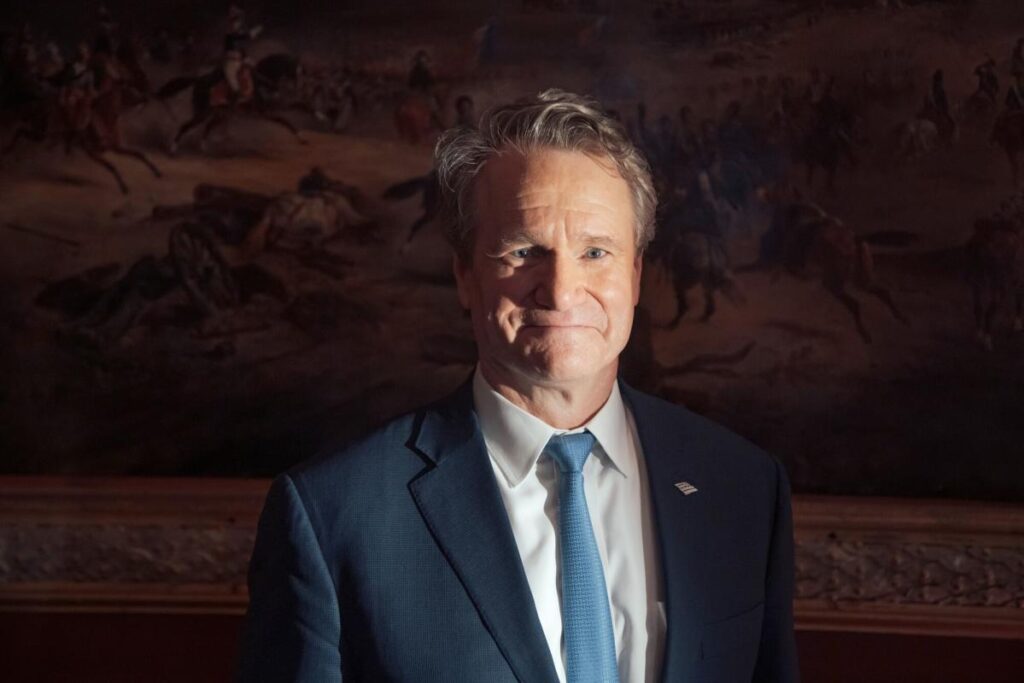Bank of America Corp. Chief Executive Officer Brian Moynihan has expressed a cautious outlook regarding the Federal Reserve’s approach to potential interest rate reductions. In a recent interview during his visit to Sydney, Australia—where the bank celebrates its 60th anniversary—Moynihan emphasized the importance of the Fed being measured in its actions. He stated that the central bank was “late to the game” in raising borrowing costs in 2022 and now faces the crucial task of ensuring that it does not overreach with rate cuts. This sentiment reflects the complexities and challenges facing the banking sector as economic conditions fluctuate, particularly with varying global and domestic pressures.
Moynihan’s leadership experience, having been CEO since 2010, uniquely positions him within the banking industry. He has seen the institution through significant financial crises, including the aftermath of the subprime mortgage crisis and the recent disruptions caused by the Covid-19 pandemic. His comments come at a time when the banking landscape has been marked by considerable instability, evidenced by the collapses of institutions such as Credit Suisse and Silicon Valley Bank. Despite the pressures, Moynihan has signaled his intention to remain at the helm of Bank of America for the foreseeable future, underscoring his commitment to navigate the lender through these turbulent times.
During the interview, Moynihan outlined his predictions for the U.S. economy, suggesting an optimistic “no landing” scenario. This idea posits a resilient economic state characterized by sustained growth that compels central banks to uphold a hawkish stance on inflation management. Highlighting favorable labor conditions, he pointed to the current unemployment rate of 4% and wage growth at 5% as indicators that challenge the notion of an impending recession. His reassuring perspective on the consumer sector suggests that the American public still possesses significant financial reserves, which could further support economic stability.
Moynihan’s forecast includes expectations for additional interest rate adjustments by the Fed, anticipating a 50 basis point reduction before year’s end, followed by four more cuts of 25 basis points throughout 2025. This forecast would result in a terminal rate of approximately 3.25%. He predicts that inflation will gradually decrease to around 2.3% by 2025 and 2026, provided these rate cuts materialize in a carefully calculated manner. The implication of his insights is that inflation management will remain a central concern for the Fed, and any missteps in the timing or scale of rate adjustments could provoke unintended economic consequences.
Despite the relatively optimistic outlook, Moynihan cautioned against the risks associated with either overly aggressive or hesitant approaches to rate cuts. He articulated that the likelihood of those risks is more pronounced now than it was six months ago, suggesting a shift in economic sensitivity. As the Fed weighs its decisions, consumer spending behaviors remain a focal point for investors eager to gauge the economic landscape. While many households still enjoy the benefits of savings accumulated during the pandemic, recent trends indicate a growing inclination toward budgetary caution, reflecting a nuanced shift in consumer sentiment.
Overall, Moynihan’s remarks encapsulate the delicate balance that the Federal Reserve and, by extension, the banking industry must navigate amidst economic uncertainty. His understanding of the interplay between growth, inflation, and consumer behavior highlights the broader implications of monetary policy decisions in the face of evolving economic dynamics. As Bank of America charts its path forward, the leadership of Moynihan remains a pivotal element in how the institution, and the financial system at large, will respond to these challenges and opportunities.

